Gerard Dillon (1916 -1971) Petrushka (Ballet) Watercolour, 63.5 x 49cm (25 x 19¼) Signed and inscribed verso Provenance: From the collection of the artists close friend Pino Saglietti, London. Exhibited: Ulster Academy of Arts 1942, Catalogue No.289; 'Gerard Dillon- First One man show', The Country Shop, 1942 Catalogue No. 1; 'Autumn Exhibition of Irish Art', November 1997, The Frederick Gallery, Catalogue No.5, where purchased by PJ and Breda Mara; 'Gerard Dillon, Art & Friendships, Adams Dublin, July 2013, The Ava Gallery, Clandeboye, Co. Down, August, Cat No. 24. Literature: 'Gerard Dillon- An Illustrated Biography" by James White 1993, illustrated p.40 showing Mainie Jellett and Gerard Dillon looking at the painting; 'Gerard Dillon: Art aand Friendships' by Karen Reihill, 2013, illustrated p.25 with the B & W image on p.24. Attending regular exhibitions in Dublin during the War, Dillon met the modernist Mainie Jellett in The Dublin Painters Gallery. Dillons biographer, James White stated that Jellet instantly responded to Dillons individualism and his uncompromising manner of expressing his distaste for photographic representation. (Gerard Dillon an illustrated Biography, pg.39) Jellet encouraged him to prepare an exhibition of his work in the Country Shop in St Stephens Green. Moving to Dublin from Belfast, Dillons first solo exhibition was opened by Jellett on the 23rd February, 1942. Jellett remarked on Dillons courage to launch on a painting career during the War adding, Art is not an escape. It is a force that can inspire and strengthen and at the same time soothe, but for this to happen the artist must be �Ǫabsolutely sincere. (Gerard Dillon An Illustrated Biography, pg.39) Dillon admired the naïve figurative style of the painter Christopher Wood (1901-1930) who designed a number of the hedonistic productions of the Ballets Russes in the 1920s. Despite training at the Académie Julian, Woods style was on one level drawn from the art of children. In this work, Dillon employs a childlike directness to the subject which Jellett recognized as absolutely sincere. First performed in Paris in 1911 Diaghilevs Petrushka tells the story of the loves and jealousies of three puppets in four scenes. Enjoyed by audiences during the War, the ballet was popular in the 1920s for improvised or pop up theater performed at fairs, streets and carnivals to entertain audiences. This work was in the collection of the artists friend, Pino Saglietti. In 1934, Dillon met the Saglietti family from Italy in London. Giuseppe Giovanni or Pino to his friends adored opera, art and ballet and became a close friend of Gerard and his brother Joe Dillon. After the War, Dillon returned to London to work on demolition sites and renewed old friendships. In the summer of 1947 Dillon stayed with the Saglietti family in the mountains of Borgotaro in the North of Italy. Touring the cities of Florence, Lucca and Parma, several paintings were inspired by this first visit to mainland Europe. In 1991 Pino Saglietti died in London and his art collection was dispersed in the late 1990s. Karen Reihill October, 2017
Gerard Dillon (1916 -1971) Petrushka (Ballet) Watercolour, 63.5 x 49cm (25 x 19¼) Signed and inscribed verso Provenance: From the collection of the artists close friend Pino Saglietti, London. Exhibited: Ulster Academy of Arts 1942, Catalogue No.289; 'Gerard Dillon- First One man show', The Country Shop, 1942 Catalogue No. 1; 'Autumn Exhibition of Irish Art', November 1997, The Frederick Gallery, Catalogue No.5, where purchased by PJ and Breda Mara; 'Gerard Dillon, Art & Friendships, Adams Dublin, July 2013, The Ava Gallery, Clandeboye, Co. Down, August, Cat No. 24. Literature: 'Gerard Dillon- An Illustrated Biography" by James White 1993, illustrated p.40 showing Mainie Jellett and Gerard Dillon looking at the painting; 'Gerard Dillon: Art aand Friendships' by Karen Reihill, 2013, illustrated p.25 with the B & W image on p.24. Attending regular exhibitions in Dublin during the War, Dillon met the modernist Mainie Jellett in The Dublin Painters Gallery. Dillons biographer, James White stated that Jellet instantly responded to Dillons individualism and his uncompromising manner of expressing his distaste for photographic representation. (Gerard Dillon an illustrated Biography, pg.39) Jellet encouraged him to prepare an exhibition of his work in the Country Shop in St Stephens Green. Moving to Dublin from Belfast, Dillons first solo exhibition was opened by Jellett on the 23rd February, 1942. Jellett remarked on Dillons courage to launch on a painting career during the War adding, Art is not an escape. It is a force that can inspire and strengthen and at the same time soothe, but for this to happen the artist must be �Ǫabsolutely sincere. (Gerard Dillon An Illustrated Biography, pg.39) Dillon admired the naïve figurative style of the painter Christopher Wood (1901-1930) who designed a number of the hedonistic productions of the Ballets Russes in the 1920s. Despite training at the Académie Julian, Woods style was on one level drawn from the art of children. In this work, Dillon employs a childlike directness to the subject which Jellett recognized as absolutely sincere. First performed in Paris in 1911 Diaghilevs Petrushka tells the story of the loves and jealousies of three puppets in four scenes. Enjoyed by audiences during the War, the ballet was popular in the 1920s for improvised or pop up theater performed at fairs, streets and carnivals to entertain audiences. This work was in the collection of the artists friend, Pino Saglietti. In 1934, Dillon met the Saglietti family from Italy in London. Giuseppe Giovanni or Pino to his friends adored opera, art and ballet and became a close friend of Gerard and his brother Joe Dillon. After the War, Dillon returned to London to work on demolition sites and renewed old friendships. In the summer of 1947 Dillon stayed with the Saglietti family in the mountains of Borgotaro in the North of Italy. Touring the cities of Florence, Lucca and Parma, several paintings were inspired by this first visit to mainland Europe. In 1991 Pino Saglietti died in London and his art collection was dispersed in the late 1990s. Karen Reihill October, 2017

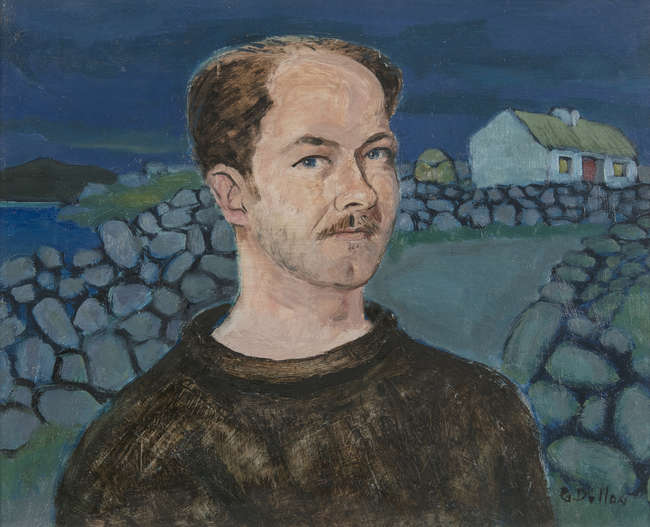
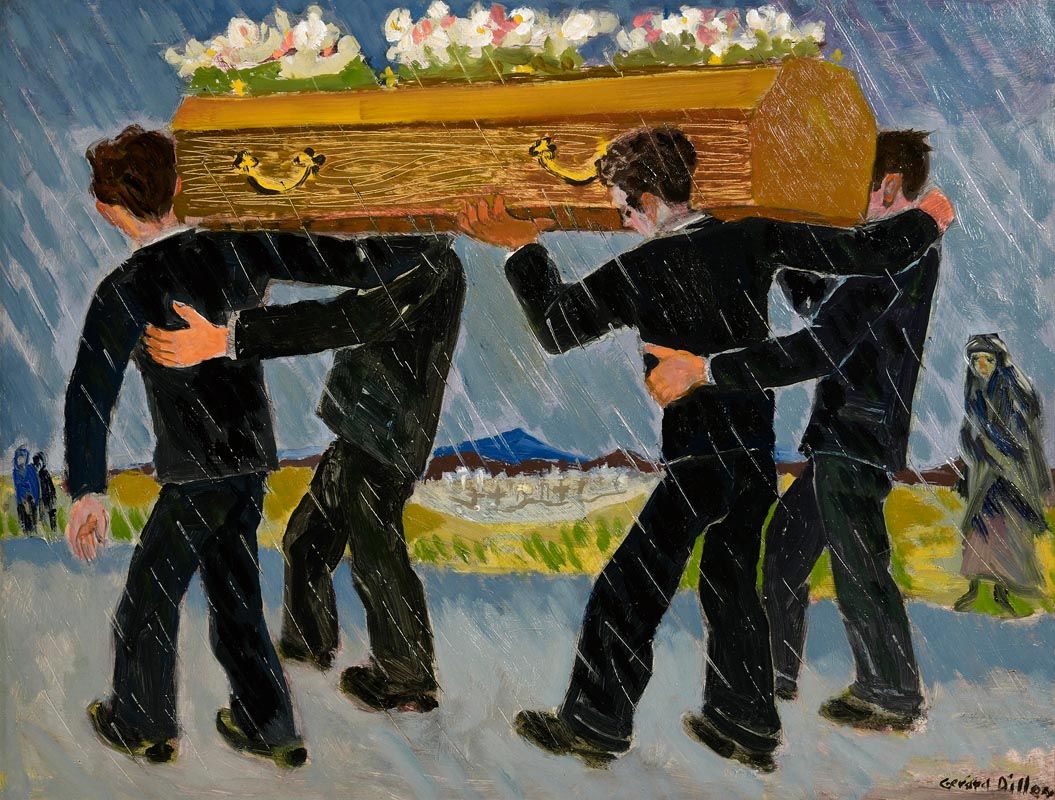
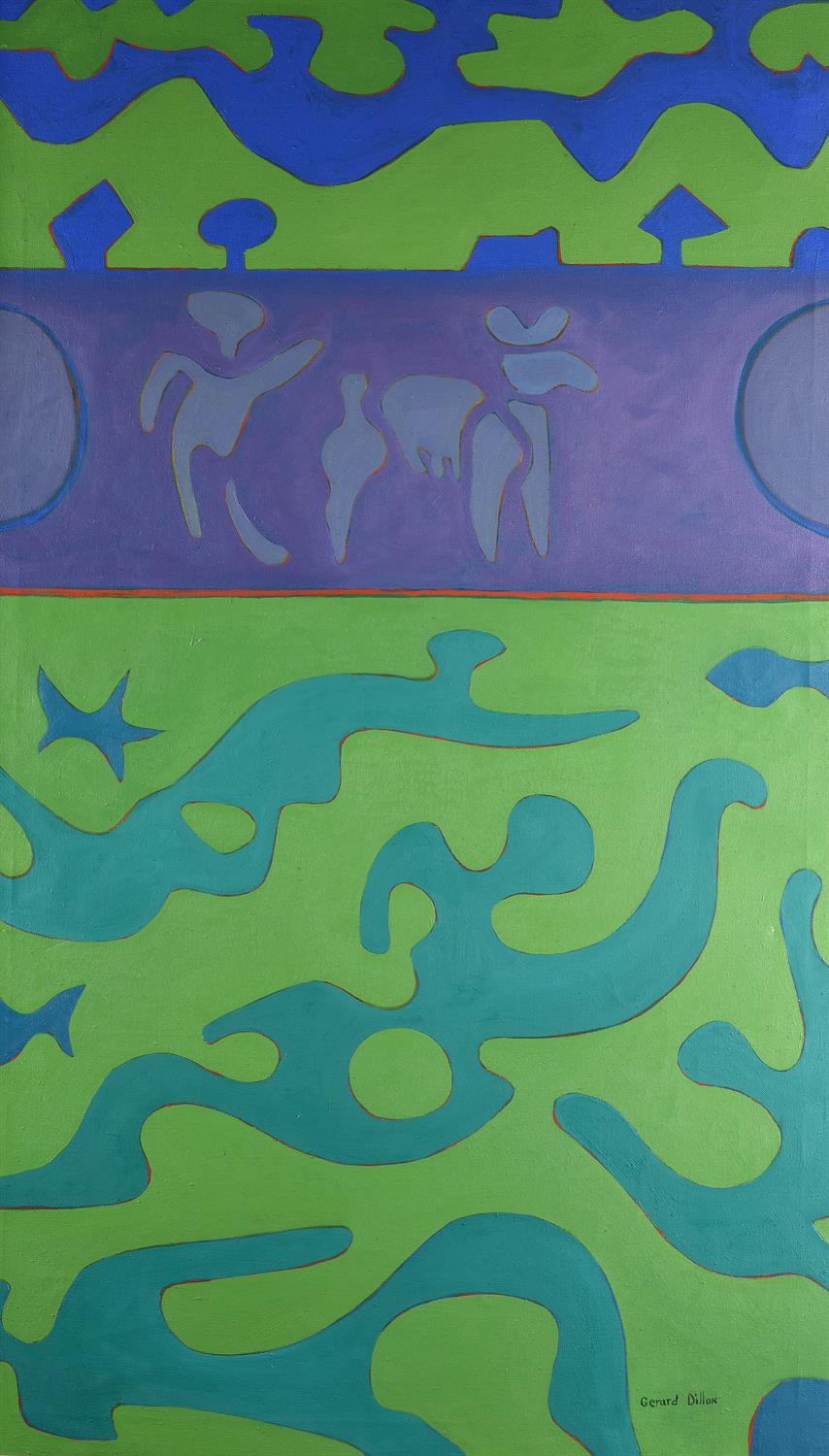
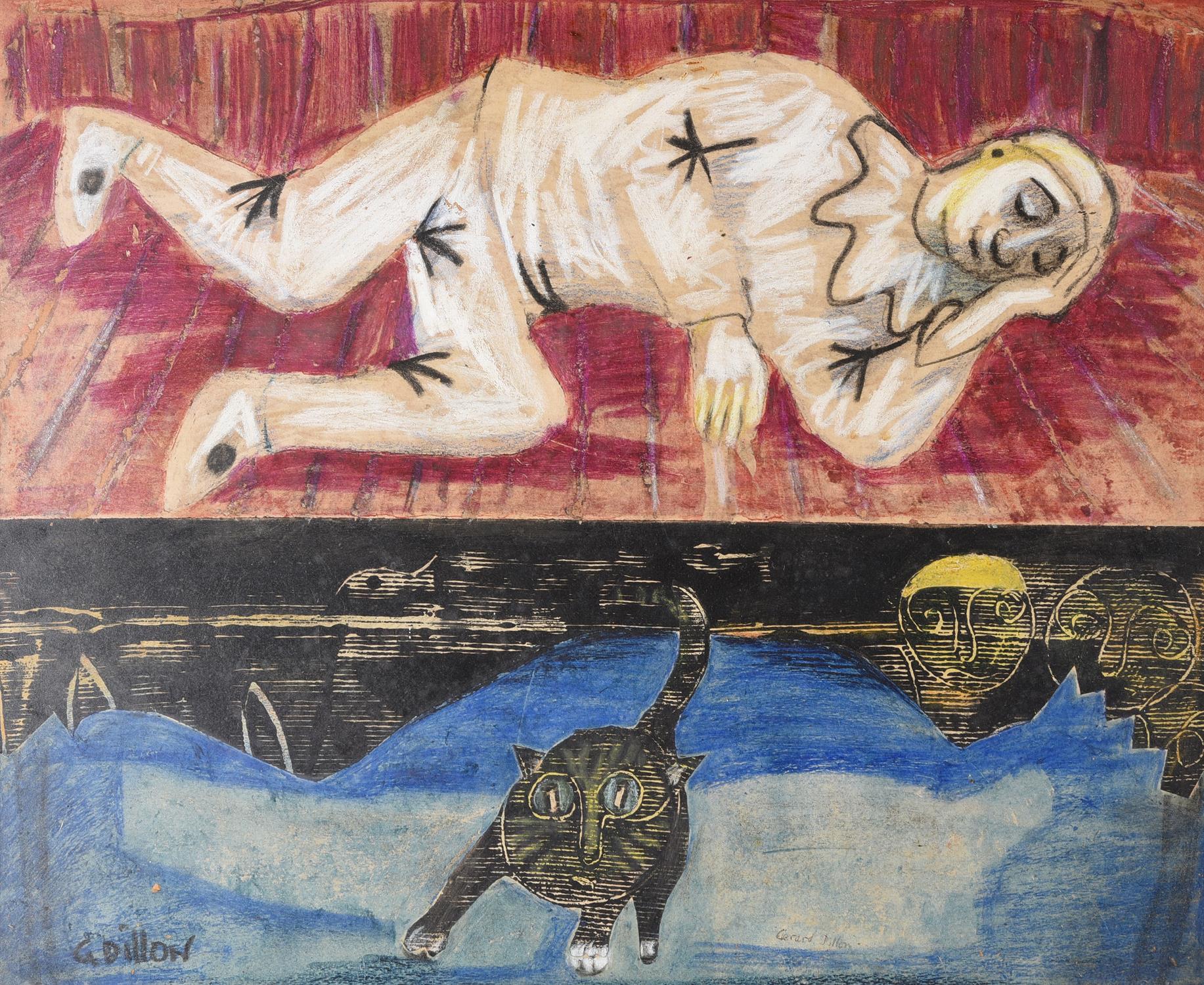
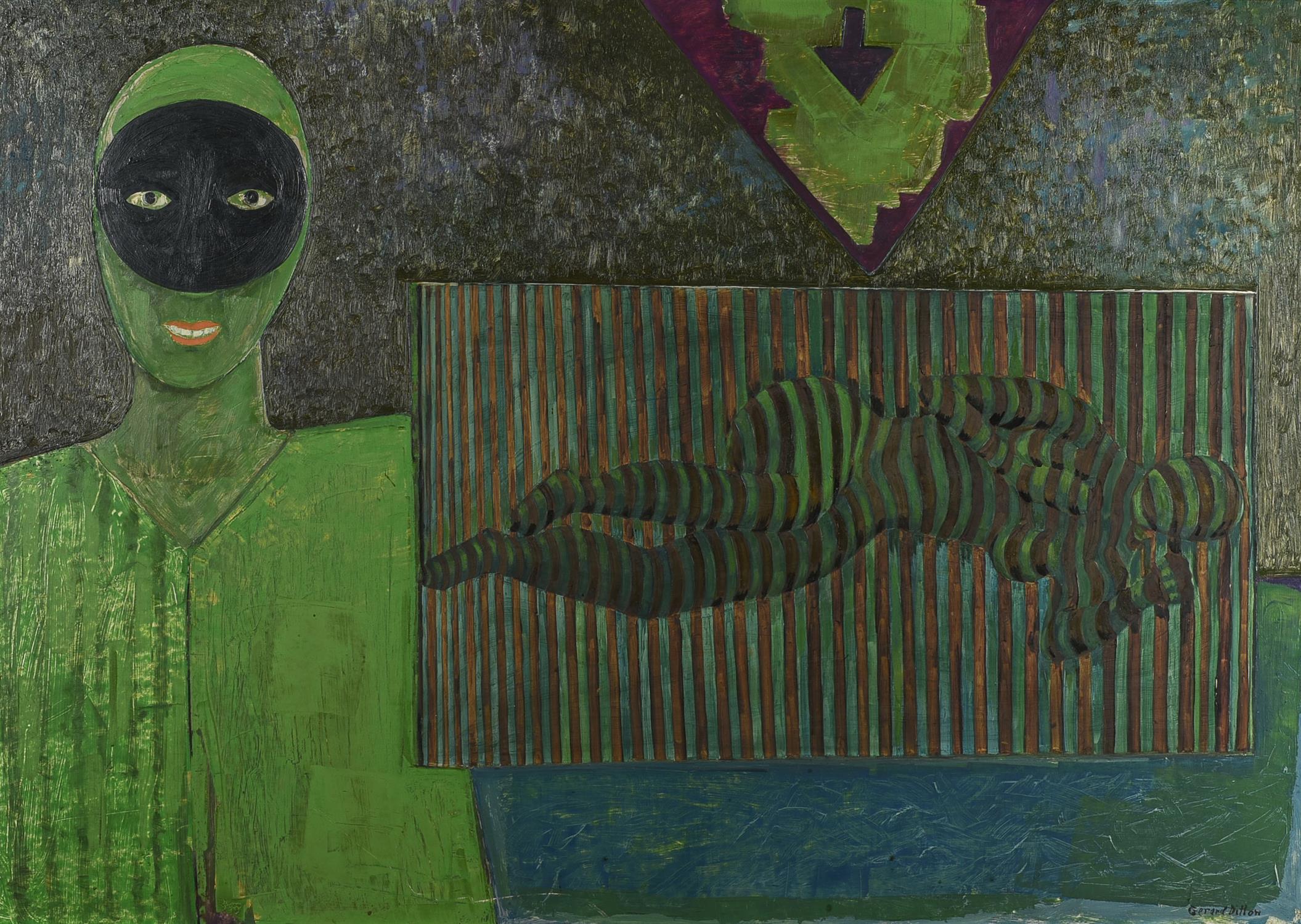
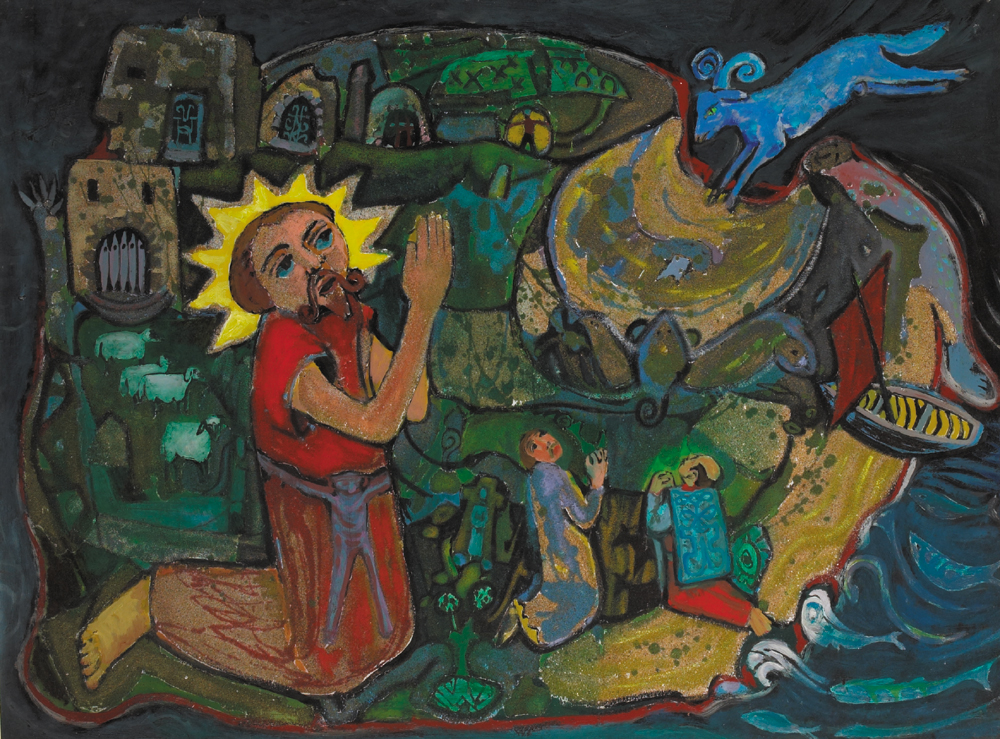


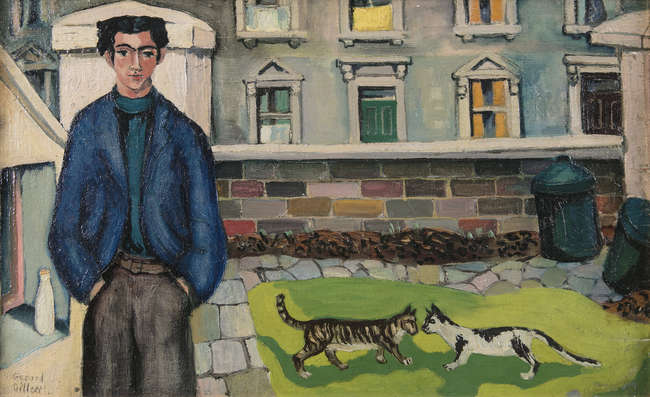
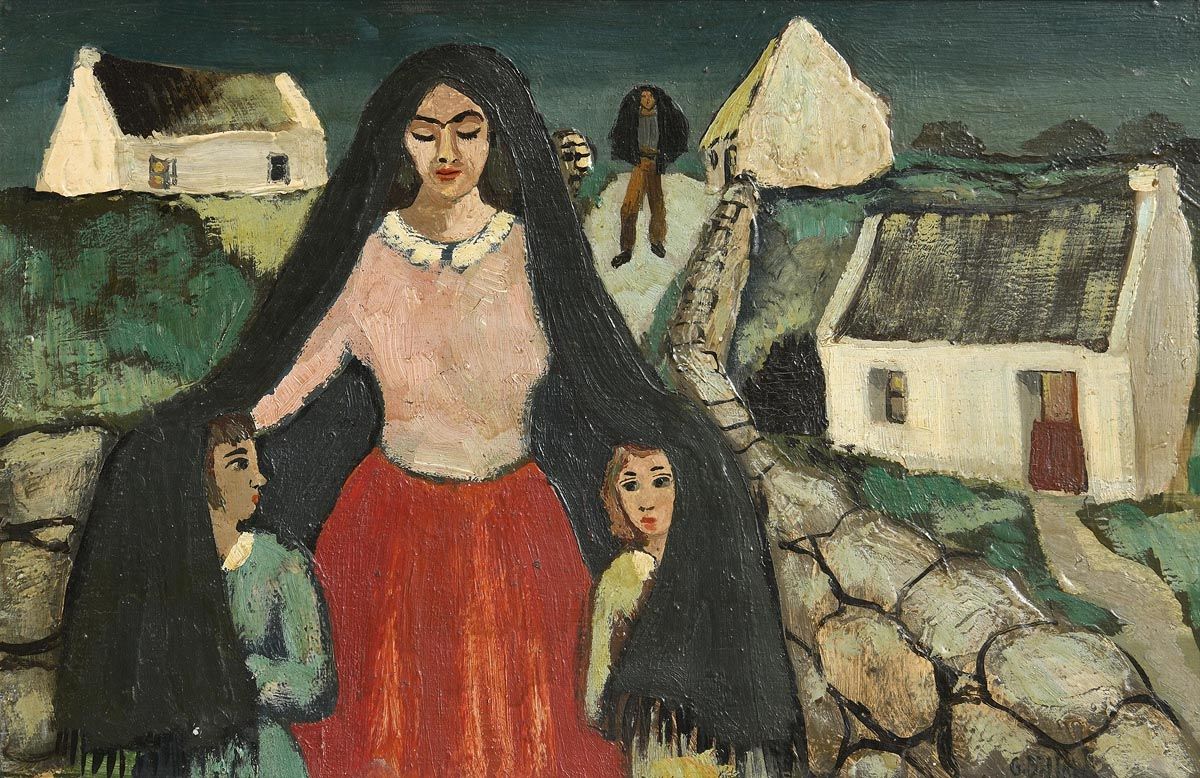
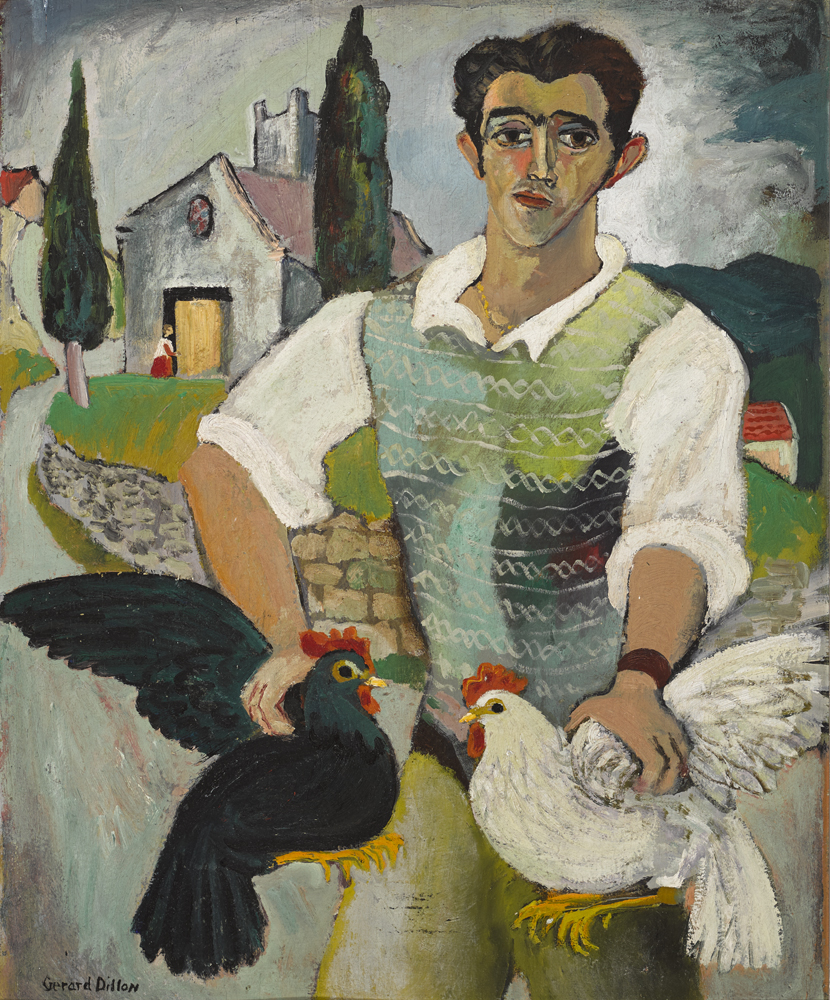


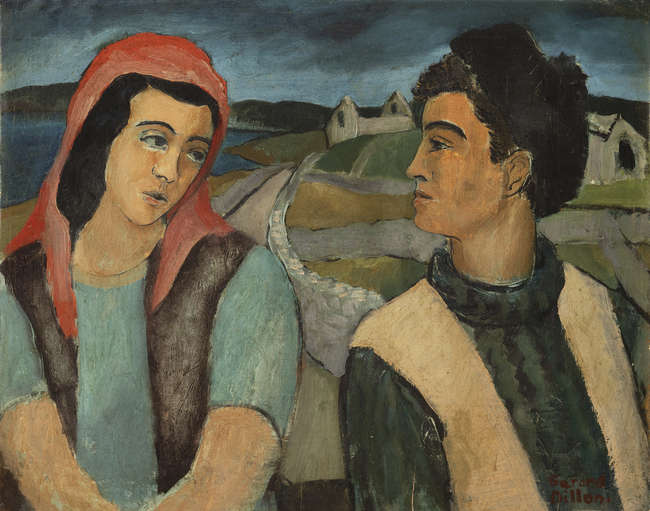
Try LotSearch and its premium features for 7 days - without any costs!
Be notified automatically about new items in upcoming auctions.
Create an alert